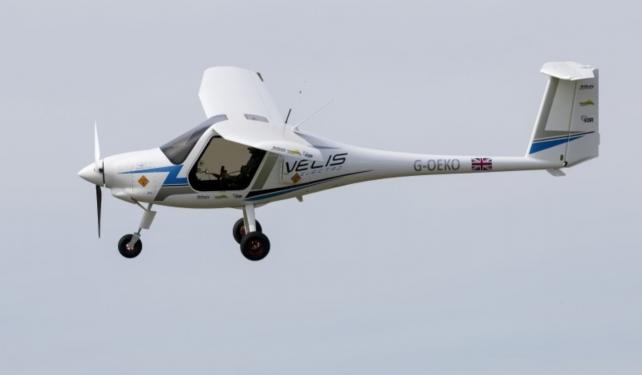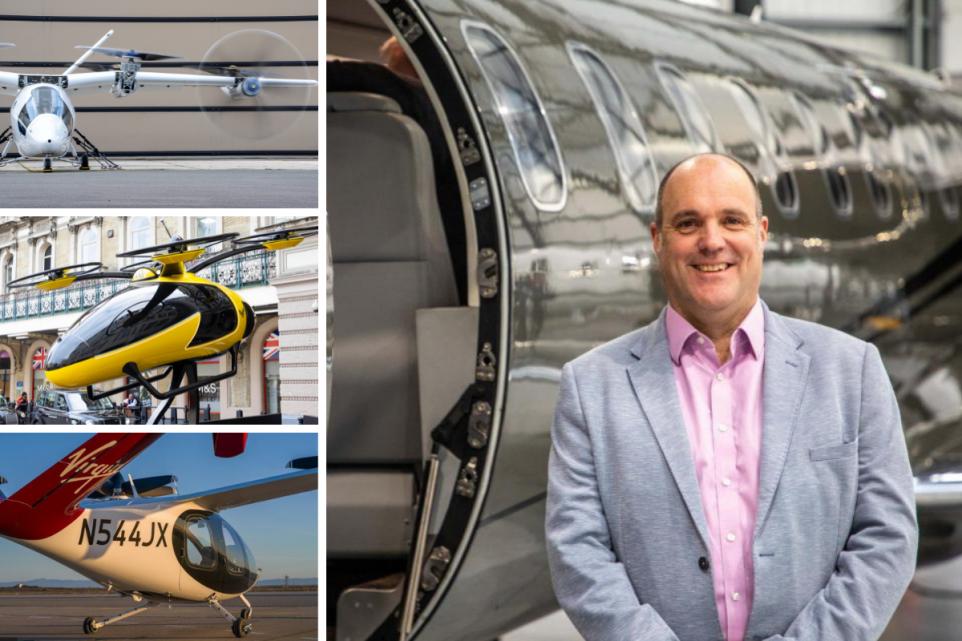UK: “East Anglia a Potential Hub for AAM”
East Anglia is aiming to be the heart of Advanced Air Mobility (AAM) for the UK, reports www.edp24.co.uk. In fact, the eastern region wants to become the country’s first Aviation Development Zone (ADZ).
EDP writes, “The zone would see the area lead the way in developing futuristic flight technologies such as small electric aircraft and drones, using systems known as Advanced Air Mobility.”
Adding, “And while flying taxis might sound like something out of The Jetsons, many believe that taking one could be as normal as flagging a cab within a decade — though perhaps a touch more expensive.”
Norwich-based private charter airline Saxon Air, Norwich Airport and Norfolk and Suffolk County Councils have joined forces to back the plans for this Zone.
Recently, the UK Labour government outlined its ambition for the UK to have “the most advanced aviation technology ecosystem in the world” announcing UKP20 million in funding.
This will help to expand the use of drones for emergency services and fly passengers in electric air taxis from as soon as 2028, subject to the usual regulatory red tape.
Saxon Air is one such UK aviation company who has been trialling electric aircraft in the region. The firm uses sustainable aviation fuel produced through renewable feedstocks such as waste oils and agricultural residues.
The area is also a hive of commercial drone activity, with companies like HexCam, based at Felthorpe Airfield, offering a range of aerial services to the energy, construction and property sectors since 2011.


Saxon Air helicopter receiving Sustainable Aviation Fuel — (Credit Saxon Air) and Electric Pipistrel Velis (Image NEBOair)
Alex Durand, Saxon’s CEO, commented, “The East of England already supports aviation innovation by taking a UK lead in the development of electric aircraft and commercial drones. The potential for unlocking further growth through better connectivity, based on emerging clean aviation innovation, is a once in a generation opportunity.”
He continued, “We have the airspace, innovators and aviation expertise to lead the way in advancing the latest clean, eco-friendly aviation technologies. The strategy we’re announcing can offer rural communities better connectivity, unlock new skills and raise aspirations by showcasing innovation and opportunities.”
The company hoped to showcase the UK’s first certified electric aircraft, Bungay-based firm NEBOair’s Pipistrel Velis, last year. It planned to fly the two-seater aircraft — one of only 10 in the UK — from Norwich to Oxford, but was unable to do so due to its range limitations and the lack of recharging stops on the way.
Durand explained, “We couldn’t do the trip because of the range gaps in the airfields.” The failed flight highlighted a critical issue. The current infrastructure for electric aviation in the UK is far from ready.
He continued, “However, we are entering a new golden age of flight centred around electric aircraft, so the required infrastructure will improve.”

Paul Huijts being shown a Saxon Air Aircraft (Credit: Saxon Air)
The ADZ plans were unveiled during a visit to East Anglia by the Dutch ambassador to the UK, Paul Huijts. The Netherlands is the biggest trading partner for Norfolk and Suffolk and it is hoped his recent visit can help to unlock Dutch investment across the region.
The ambassador’s two-day visit began at Felixstowe Port in Suffolk and featured tours of Saxon Air at Norwich Airport and Norwich Research Park, before concluding at the city’s Sainsbury Centre.
Huijts remarked, ”East Anglia and the Dutch have many historical connections. Those ties resonate today from Norwich Airport flights to Schiphol and shared expertise and collaboration in areas such as agriculture and health.”
Chris Starkie, Director of Growth and Investment at Norfolk County Council, said, “Aviation East represents a bold new vision for the region, leveraging the power to create faster, greener and more accessible connectivity solutions. At the heart of this initiative is the creation of the Innovation Hub at Norwich Airport, a central development zone dedicated to the advancement of sustainable aviation technologies.”
He added, “This will support new platform operators and ensure that the region becomes a leading force in the next generation of air travel.”
Banbury in Oxfordshire is already a growing hub for UK drone development and eVTOLs. Close by, for example, is the home of Skyfly and its fixed-wing Axe aircraft which allows it to either take off vertically or land on a runway.


Virgin Atlantic, Joby Aviation Partnership and London Hub Network featuring Norwich (Credit: Joby)
Meanwhile, Bristol-based Vertical Aerospace is the largest of the eVTOLs presently being developed in the UK, while Virgin Atlantic and U.S‑based Joby Aviation recently announced a partnership to offer short-range journeys across the UK via a flying taxi service, hopefully within the next three years. Flights will be sold for up to four passengers at speeds of 200 mph from hubs at Heathrow and Manchester Airport.
In the future, customers may be able to travel from Norwich as part of the London Hub network, but the timeline for the roll-out, as well as pricing, remains unclear.
Therefore, it is quite feasible for the UK to create various green aviation hubs around the country in the future, including East Anglia.
News Source: https://www.edp24.co.uk/
(Top image: Alex Durand — Credit: SaxonAir)
For the latest news, insights and content regarding the global Advanced Air Mobility market, please join the following eVTOL Insights channels: WhatsApp, Facebook, Instagram, Spotify, Apple Podcasts, YouTube, X and LinkedIn.


